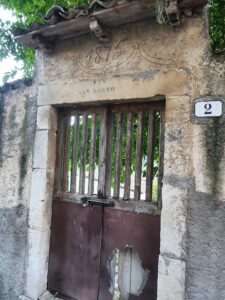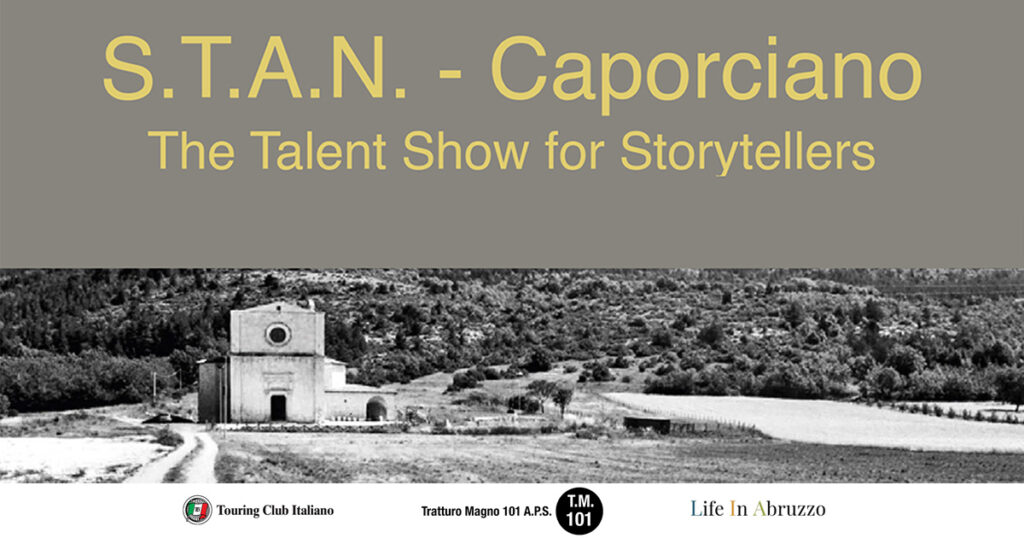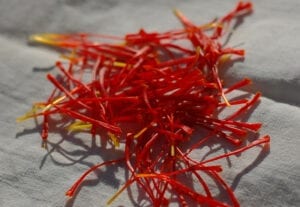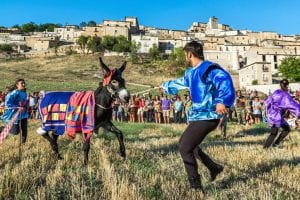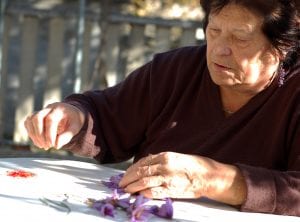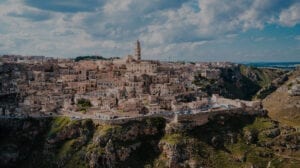The quiet, unassuming town of Caporciano is about twenty minutes by car from L’Aquila, an hour from Pescara, and just an hour and a half from Rome. Ancient houses of soft fawn rock huddle together silently on the hillside amidst thick forest and almond groves – if they could speak, what tales they could tell! Caporciano is a place that effortlessly wears the mantle of a colourful history down the centuries.
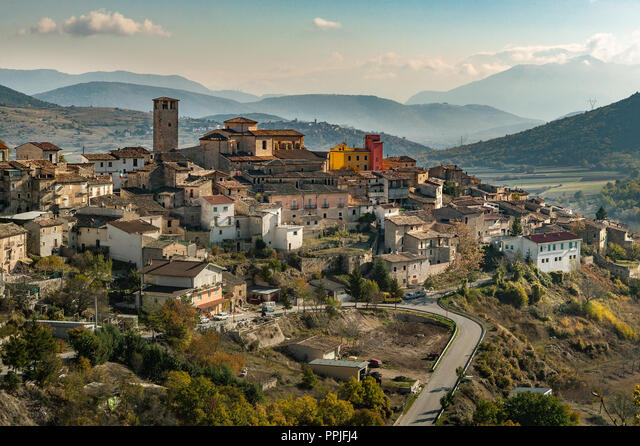
This sleepy medieval hamlet eight hundred or so metres above sea level on the Navelli plateau is surrounded by a wealth of historic marvels. Caporciano and its frazione Bominaco date back to the twelfth and thirteenth centuries, remnants of a turbulent past in the region, with castle keeps and watchtowers still standing long after the battles have faded away.
At the top of town, a torre di avvistamento, or watchtower, built in the eleventh century, gives Caporciano its distinctive profile. This tower was once part of a medieval castle which was destroyed in the fifteenth century by the warlord Braccio da Montone. The ‘new’ church of San Benedetto Abate was built in the sixteenth century on top of the castle ruins and the ancient watchtower was converted to a campanile (belltower) for the church. Herein lies a surprise: the starkly simple stone exterior façade of this church conceals a magnificent Baroque interior of elegance and luminosity, housing a cupola, cruciform nave and ten vaulted side chapels.
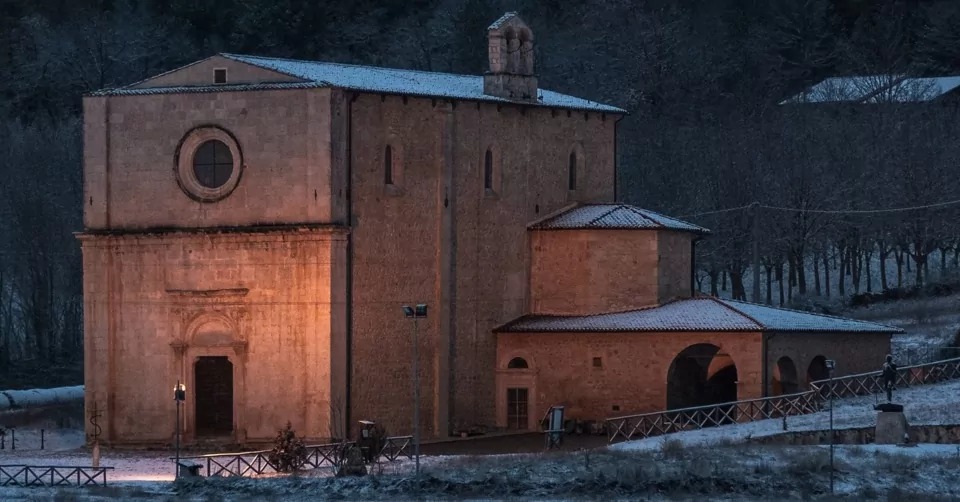
S Maria de Centurelli – Lyon Corso
Higher up the mountainside, in Bominaco, are the remains of a Norman castle dating back to the twelfth century, also destroyed by Braccio da Montone, in 1424. The current ruins are actually those of a fifteenth-century reconstruction by a local feudal lord, and they contain traces of some complex internal masonry. Bominaco is home to two noteworthy churches as well, built between the eleventh and thirteenth centuries. The Romanesque church of Santa Maria Assunta and the World Heritage-listed medieval oratory of San Pellegrino sit side-by-side on a pine-clad hillside overlooking Caporciano. San Pellegrino is home to a stunning cycle of frescoes that entirely cover the interior walls and this humble sanctuary has become known as the “Sistine Chapel of Abruzzo“.

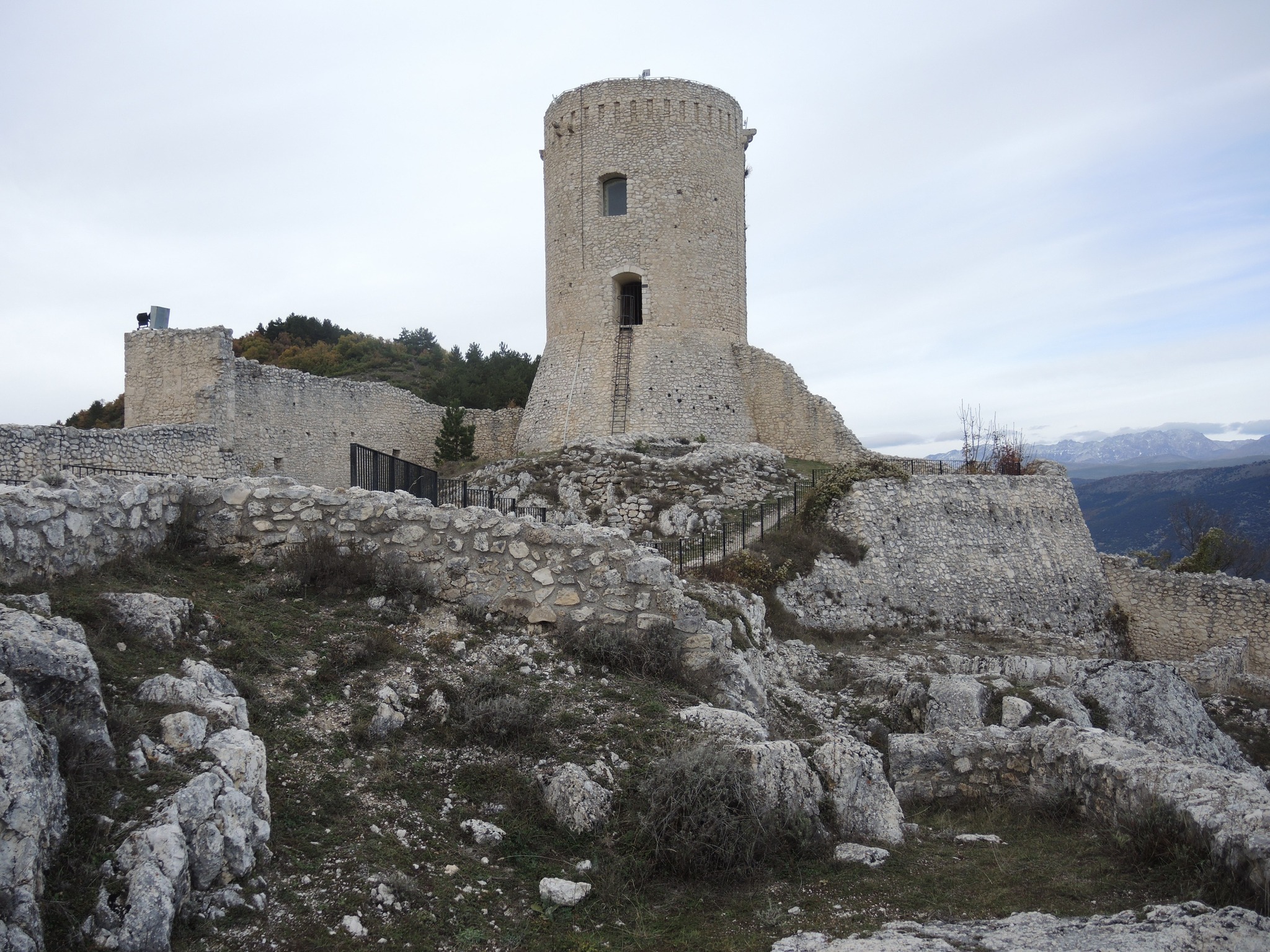
Caporciano has deep connections with pre-history. The Trattura Magno runs right past the town, the ancient route for the transumanza along which shepherds have herded their flocks from the mountains to the sea since time immemorial. Here, two major arms of the route, L’Aquila-Foggia and Centurelle-Montesecco intersect, and at this crossroads, sitting placidly among the fields of the Navelli Plain is another sixteenth-century church, the beautiful Chiesa di Santa Maria de’ Centurelli. Constructed in 1561, this was a place of worship with a practical addition – the sturdy stone annexe on the right-hand side was purpose-built to offer shelter to shepherds and their flocks on cold and frosty nights. It is said that the windows of the church were even built at a lower height than usual so that the shepherds could keep an eye on their flocks from inside!
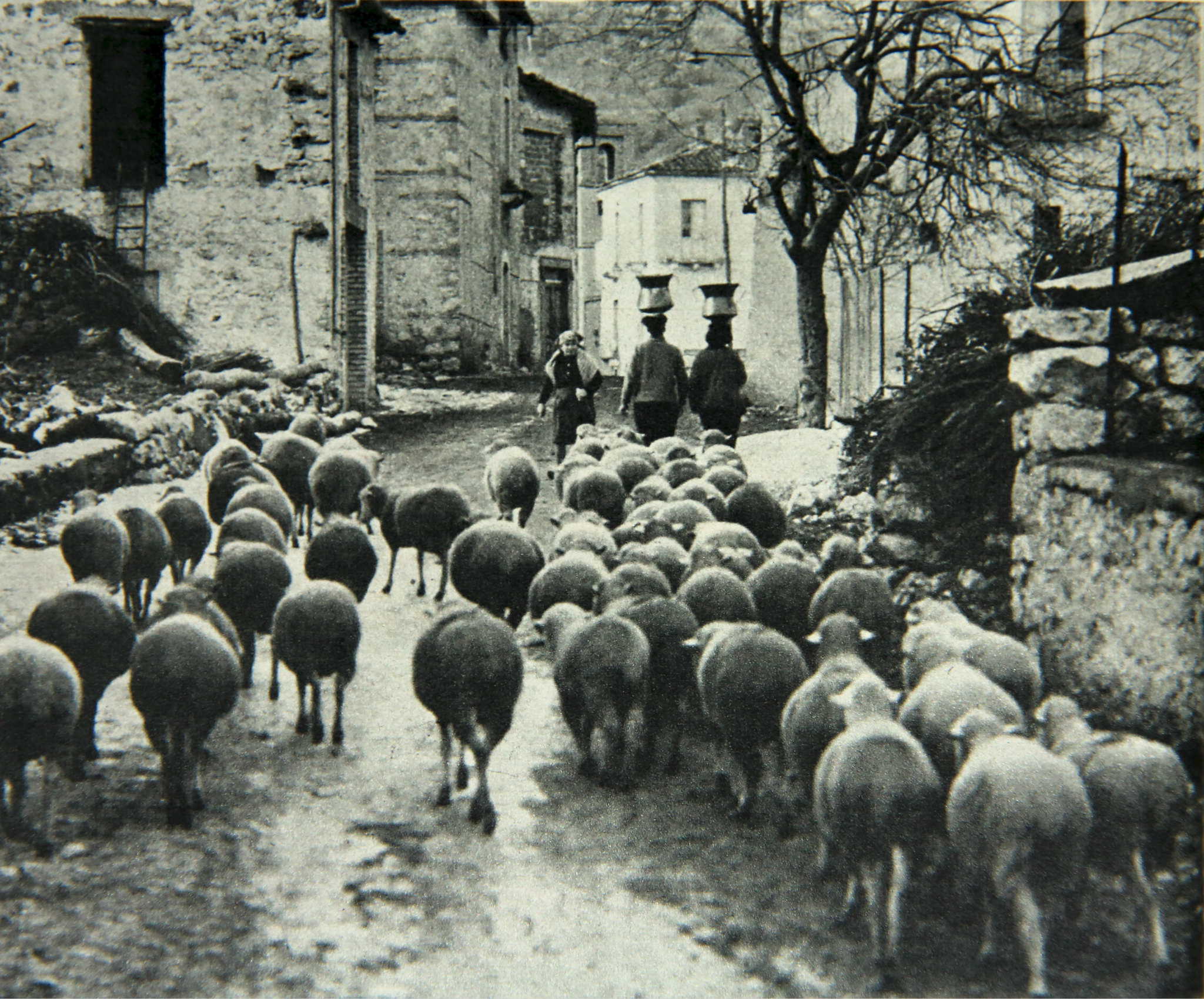
Bominaco – ritorno di un gregge al paese (no photographer credited) 1965
Such are the stories of Caporciano, AQ, and there are many more. Do you have a story to tell about Abruzzo? Would you like a chance to spend a weekend for two in Caporciano, this historic town of marvellous secrets? If so, this competition is for you, click thru to view in detail:
Photo Credits
Read Bettina’s Post about her father, Missing Pieces Part 2: Domenico Natale, from Caporciano, AQ


